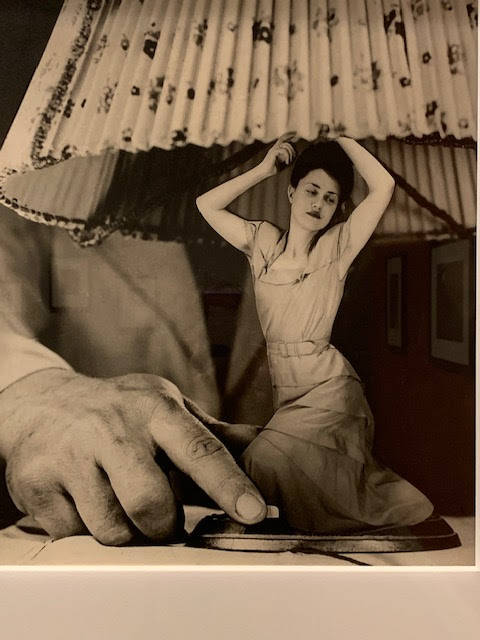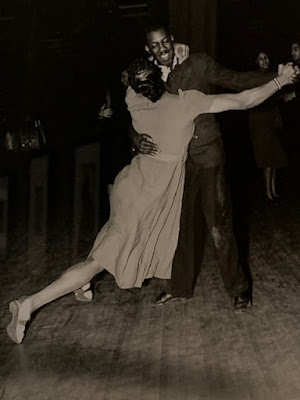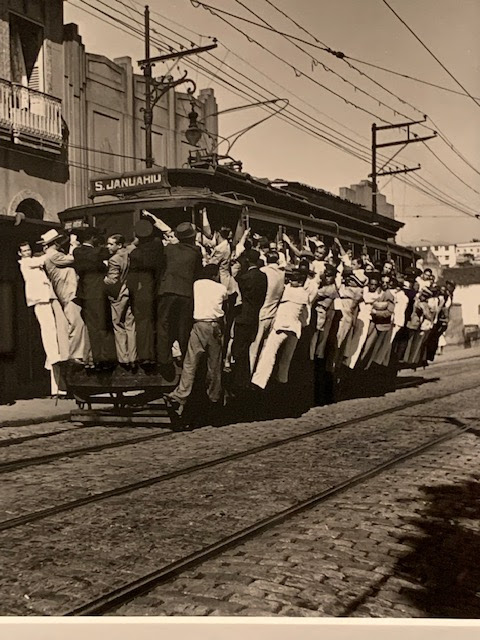GALA Hispanic Theatre's La Casa de la Laguna (The House on the Lagoon) is anything but calm.
It's the world premiere of the play by Caridad Svich, based on the novel by Rosario Ferré, the story of a tumultuous marriage and a woman's search for meaning.
Directed by Rebecca Aparicio, the production follows the adult life of a woman seeking her independence while Puerto Rico's modern history and internal debates about its quest for statehood, flow in the background.
From left, Omar Cruz as Manuel, Ernesto Concepción as Quintín, Evelyn Rosario Vega as Petra (standing), and Yaiza Figueroa as Isabel in GALA Hispanic Theatre's La casa de la laguna (The House on the Lagoon)/Photo by Daniel MartínezThis "casa" is a complex, multi-generational drama, action-packed with relationships and disharmonies.
The acting brings some of Puerto Rico's finest to Washington, many making their technical and stage debuts at GALA.
The lagoon is a conclave of wealthy homes where the Mendizábal family has raised their son Quintín (Ernesto Concepción), according to strict guidelines of the father, Buenaventura (Juan Luis Acevedo).
Quintín is a vigorous showman whose dominance will never succumb to a woman or love of family. Like his father, he is unwilling to compromise, and his intensity increases as the play progresses alongside the passage of his wife's journey.
Yaiza Figueroa is Isabel, who falls in love with the seemingly suave, "gentle" Quintín on a romantic beach. As their relationship evolves, his controlling father wants to know if Isabel is good enough for his son.
Buenaventura has no trouble convincing the audience that he calls the shots in his family, aided by his charming wife, Rebecca (Luz Nicolás), whose well-tamed behavior is one desired by her offspring for his own wife.
Never without a lit cigarette, Rebecca coddles her husband and son, smiling all the while with soothing deliveries.
But someone forgot to tell Quintín that time moves on and today is not yesteryear.
Quintín and Isabel marry and have a son Manuel (Omar Cruz, excellent in his role as the irreverent son). The years pass, and Isabel struggles with wifely duties vs. her own self-awareness and questions of identity.
She starts writing an autobiography about their families which enrages Quintín when he finds the book that he secretly begins to edit.
At home, the housekeeper, Petra (Evelyn Rosario Vega) maintains some normalcy with a mild demeanor until she, too, can't handle it anymore. Her slower pace, pulled back hair, and halting speech keenly demonstrate the advent of time.
Throughout the performance I held my breath, worrying whether the men would strike, like the vipers they were.
The conclusion was quite the surprise.
Another cast member is María Coral as Coral, Manuel's girlfriend.
Germán Martínez produced savvy sounds and music to forecast rising conflicts and tension on many horizons.
Puerto Rican artist Gerardo Díaz Sánchez designed a minimalist set of dining and living room furniture on opposite sides of the stage to complement the backdrop of frequent video and photo changes of Puerto Rico.(Production by Kelly Colburn.)
Costuming by Jeannette Christensen is realistic with Rebecca's bright, colorful gowns, a welcome visual variation.
Other technical crew members are Jennifer Fok, lighting; Ilyana Rose-Dávila, stage manager and props; Vanessa Losada, production manager; and Hugo Medrano, producer.
La Casa de la Laguna was a finalist for the National Book Award when it was published in 1995. Ms. Ferré (1938-2016) was a leading author in contemporary Latin America who studied at Wellesley College, Manhattanville College, the University of Puerto Rico, and the University of Maryland.
Her father was the third elected governor of Puerto Rico and the founding father of the New Progressive Party which advocates for U.S. statehood.
The production is made possible with generous support from the DC Commission on the Arts and Humanities, the Miranda Foundation, and the National Endowment for the Arts which recently awarded GALA a $150,000 grant from the American Rescue Plan.
GALA will use the money to save jobs and to fund operations and facilities, health and safety supplies, and marketing and promotional efforts to encourage attendance. GALA was one of 567 arts organizations in all 50 states, Puerto Rico, the U.S. Virgin Islands, and Washington, DC. to receive a grant.
GALA audiences are seldom disappointed by anything less than dynamic acting and fascinating stories which capture our minds and send us away on thoughtful adventures.
What: La Casa de la Laguna (The House on the Lagoon)
Masks, vaccination cards and photo IDs required, or proof of negative covid-19 tests within 72 hours
When: Thursday through Sunday, Feb. 27, 2022 at 8 p.m. except Sundays, 2 p.m.
Where: Gala Theatre, 3333 14th St NW, Washington, DC 20010.
Handicapped accessible
Duration: About two hours and one intermission
Metro stations: Columbia Heights is one block away or get off at McPherson Square, take bus #52 or #54 up 14th, or, instead of the bus or Metro, walk two miles up 14th, save money and expend calories! Lots of places to eat along the way.
, and Yaiza Figueroa. Photo Daniel Martínez.jpg)

































